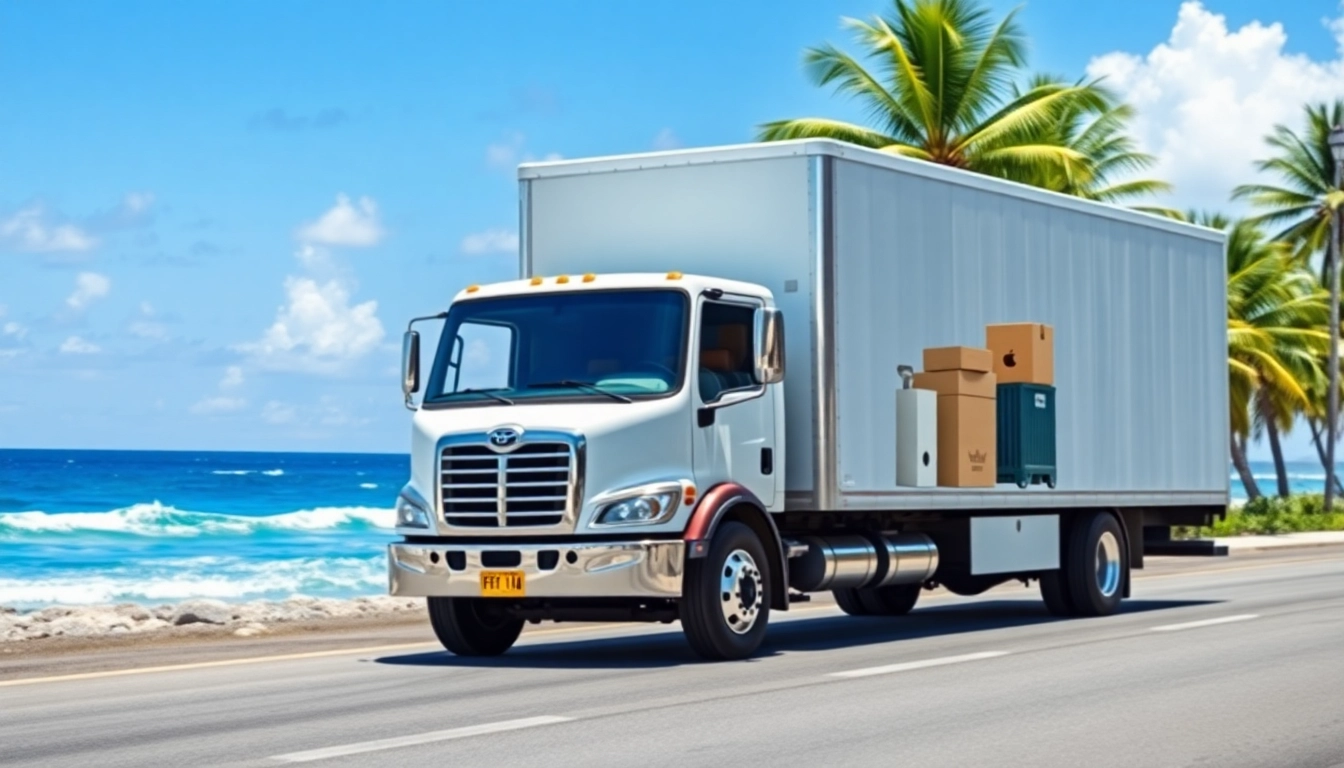Understanding the Logistics of Moving from Alaska to Hawaii
Planning a move can often feel like a monumental task, especially when it involves crossing thousands of miles from one state to another. The concept of Moving from Alaska to Hawaii presents a unique set of challenges and considerations. By understanding the logistics involved, you can ensure a smoother transition. This guide will help you navigate the various methods of transportation, preparation for your belongings, and the costs and timeframes associated with this journey.
Choosing the Right Moving Method
When relocating from Alaska to Hawaii, the method of transportation you choose will significantly impact your experience. There are generally two options: shipping via container or utilizing air freight. Each comes with its own set of advantages and disadvantages.
- Shipping by Container: Shipping your household goods in a container can be more cost-effective, especially for larger volumes. This method allows you to pack your items securely, and containers can typically hold furniture, appliances, and personal belongings. However, keep in mind that sea transport can take several weeks, so you will need to be patient.
- Air Freight: If you require faster service, sending your items via air freight is an option. This method is substantially quicker, allowing your belongings to arrive in a matter of days. However, it can be significantly more expensive, especially if you are moving large quantities or heavier items.
Preparing Your Household Goods
Proper preparation of your household goods can help mitigate risks during transit and ensure that everything arrives in condition. Begin by inventorying your belongings and determining what you will take with you and what you may leave behind or donate. Consider the following steps:
- Decluttering: Moving is an excellent opportunity to dispose of items you no longer need. Reduce unnecessary items to lessen the burden of your moving costs and make packing more manageable.
- Packing Carefully: Invest in quality packing materials such as bubble wrap, sturdy boxes, and packing paper. Properly pack fragile items and label boxes clearly to avoid confusion upon arrival.
- Insurance: Consider purchasing insurance to protect your belongings during transit. This can provide peace of mind knowing that your items are covered in case of damage or loss.
Understanding Costs and Timeframes
The costs associated with moving from Alaska to Hawaii will vary based on several factors, including the volume of goods being shipped, the method of transportation chosen, and any additional services you may require. Here are some general insights:
- Cost Estimates: On average, you could expect to pay anywhere from $3,000 to $10,000 for a full household move, depending on the size and distance of the shipment.
- Timeframes: Sea freight shipping may take anywhere from two to six weeks, while air freight is usually completed within a week. It’s essential to account for these timeframes when planning your move.
Evaluating the Geographic and Cultural Differences
The transition from Alaska to Hawaii encompasses substantial geographical and cultural shifts. Understanding these differences is crucial for adapting to your new environment.
Climate Considerations
Alaska and Hawaii differ radically in climate, influencing lifestyle and daily activities. Alaska experiences long winters, mild summers, and a vast range of temperatures, while Hawaii enjoys a tropical climate characterized by warm temperatures year-round. This shift will impact everything, from your wardrobe to your outdoor activities. Expect to swap parkas for swimsuits and embrace coastal living.
Cultural Adjustments
Hawaii has a rich cultural heritage that differs significantly from that of Alaska. Embracing local customs, practices, and the Hawaiian language can enhance your integration into the community. Familiarize yourself with local traditions, festivals, and community gatherings. You’ll find that this cultural integration can enrich your experience in your new home.
Life Style Comparisons
The lifestyle in Hawaii may feel markedly different from that in Alaska. While both places offer stunning natural beauty, the pace of life in Hawaii tends to be more relaxed. Recreational activities in Hawaii often revolve around the ocean, including surfing, snorkeling, and enjoying beach life. In contrast, Alaska is known for its outdoor adventures like hiking, fishing, and snow sports. Understanding these lifestyle elements can help ease your transition.
Key Tips for a Smooth Move
To facilitate a successful move from Alaska to Hawaii, organization and foresight are key. Here are essential tips to consider:
Organizing Your Packing Strategy
Creating a detailed packing strategy will help streamline your moving process. Start several weeks in advance, organizing your items by category to simplify packing and unpacking. Label boxes clearly, indicating which room they belong to, and decide which items are essential for your first days in Hawaii. Having an essentials box, containing necessary daily items, will also be beneficial.
Renting Storage Options
If you’re not ready to move all at once, consider renting a storage unit. This option allows you to store items temporarily before they are shipped to Hawaii, especially if you are downsizing or need time to find permanent housing. Evaluate local storage facilities for their security and accessibility features.
Hiring Professional Movers
While it’s possible to manage your move independently, hiring professional movers can alleviate stress and provide you with a smoother experience. Choose a company experienced in long-distance and international moves who can offer comprehensive services, including packing, transportation, and unpacking help. This professional touch can save you time and effort.
Preparing for Your Arrival in Hawaii
Being ready for your arrival can make the transition smoother and set a positive tone for your new life in Hawaii.
Finding Housing
Before you arrive, research housing options in your desired area of Hawaii. Whether renting or buying, familiarize yourself with local real estate trends, neighborhood options, and housing costs. Many areas have online listings that provide valuable information on pricing, amenities, and available properties.
Healthcare and Education
Healthcare accessibility is an important factor to consider. Research local healthcare providers and hospital systems. Likewise, if you have children, understanding the education system in your new area is crucial. Explore school districts, available programs, and extra-curricular activities that might be beneficial for your kids.
Integrating into the Community
Community involvement can significantly enhance your experience in Hawaii. Attend local events, join clubs, or participate in community projects to meet new people and build connections. Building relationships in your community will provide a support network and help you adapt to your new home more quickly.
Post-Move Considerations and Follow-ups
After the moving process is complete, consider some essential follow-up tasks to finalize your relocation.
Settling into Your New Home
Unpacking can feel daunting, but taking it step-by-step makes it manageable. Prioritize essential rooms like the kitchen and bedrooms first, allowing you to create a functional home space quickly. Personalize your new environment with decorations and items that resonate with you to make it feel like home.
Registering Your Vehicle
If you’re bringing a vehicle to Hawaii, it’s necessary to understand the registration requirements specific to the state. Visit the Department of Motor Vehicles’ website for information on registration, emissions testing, and obtaining a Hawaii driver’s license.
Establishing Utilities and Services
Ensure that essential utilities such as electricity, water, internet, and waste management services are set up before you move in. Research local providers, and plan ahead to avoid disruption in your services. As each service provider has specific requirements for setup, a little advance planning can prevent unnecessary stress.



